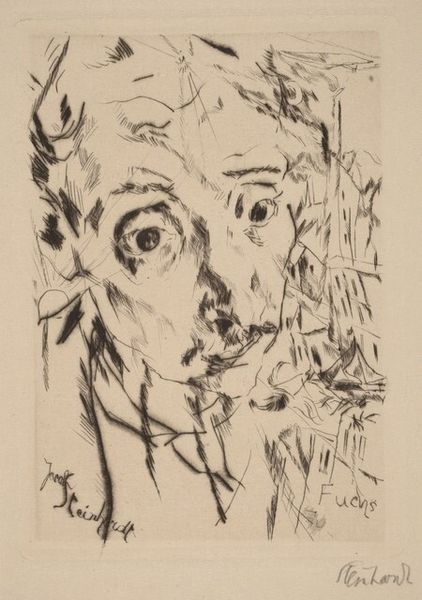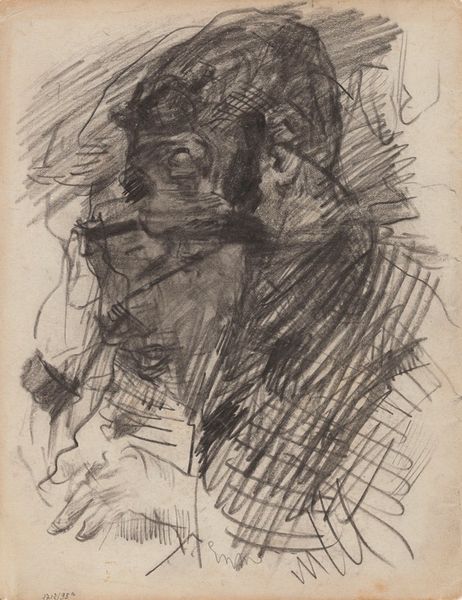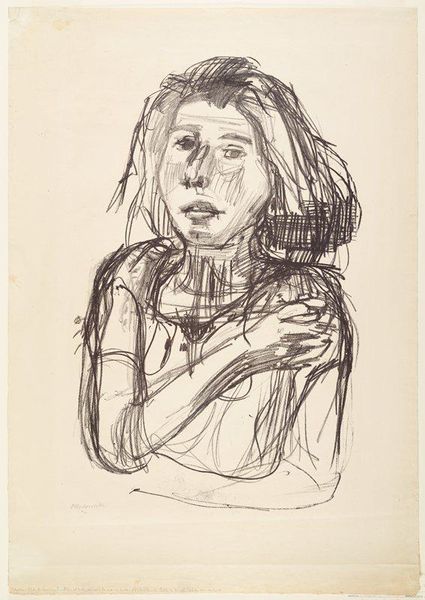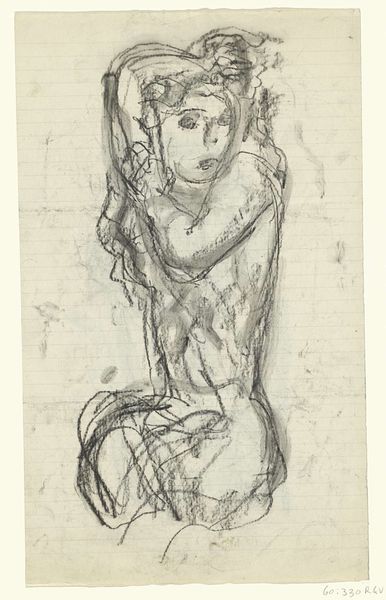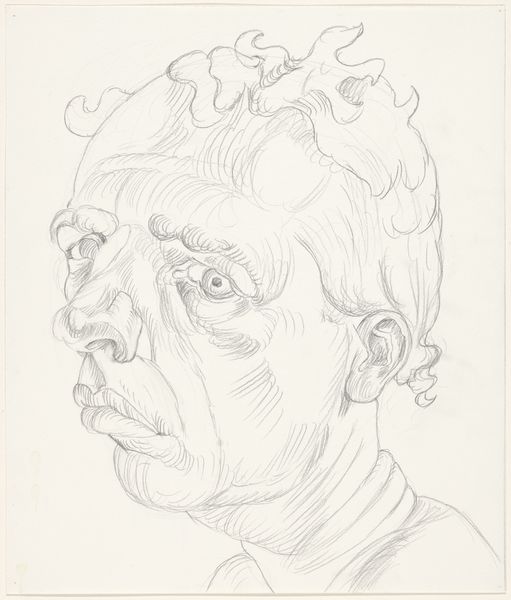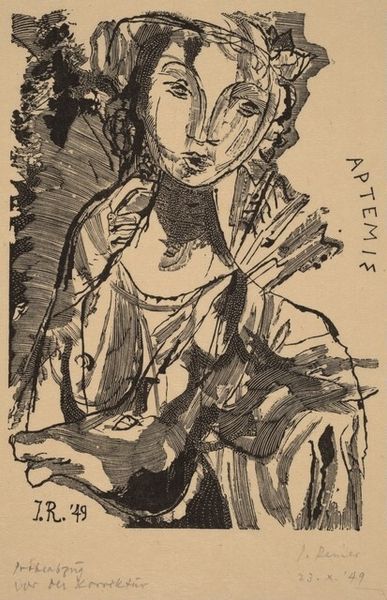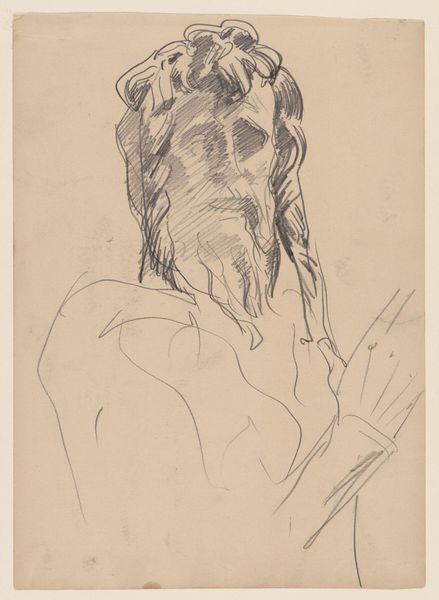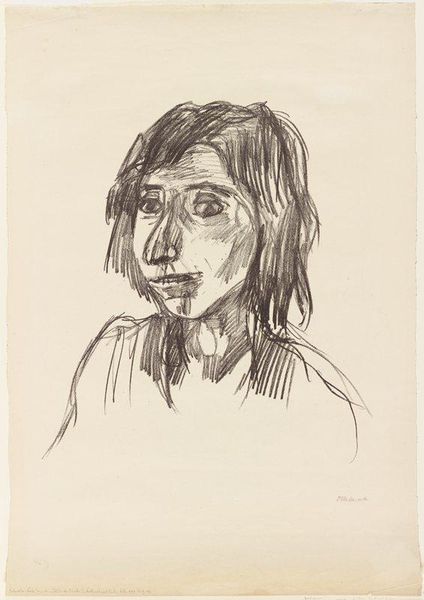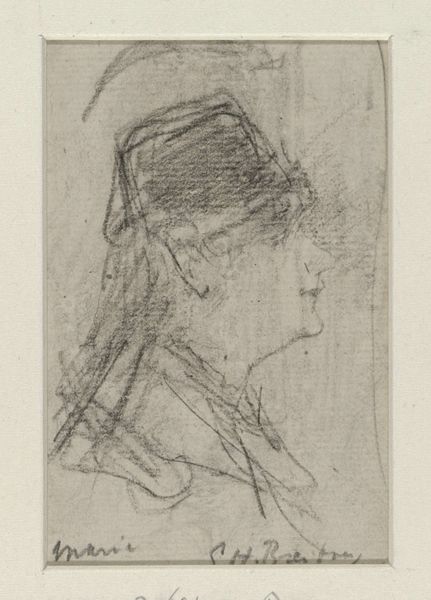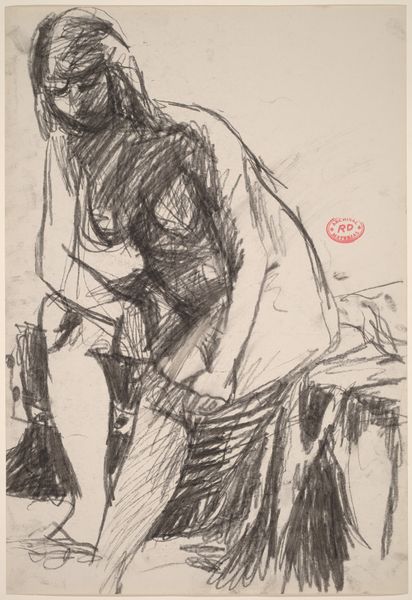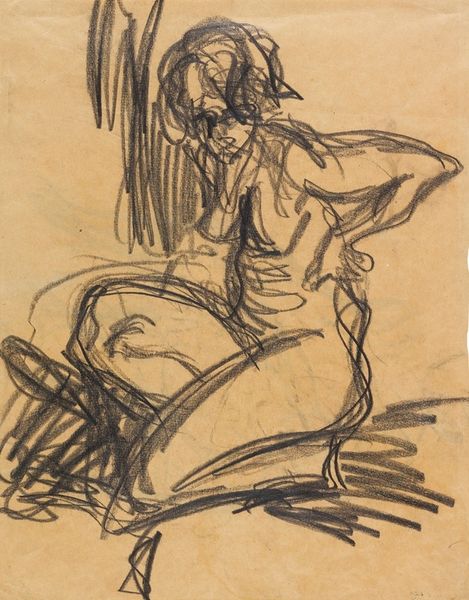
#
amateur sketch
#
light pencil work
#
ink drawing
# print
#
pen sketch
#
pencil sketch
#
pencil drawing
#
ink drawing experimentation
#
pen-ink sketch
#
portrait drawing
#
fantasy sketch
Copyright: National Gallery of Art: CC0 1.0
Curator: Looking at Oskar Kokoschka's "Corona I" from 1918, a somber mood seems to immediately wash over me. What’s your first reaction? Editor: The nervous energy in this portrait is palpable. The frantic strokes, the unsettling gaze. There’s very little smooth line work present; it's like raw emotion made visible. Curator: Absolutely. Kokoschka was deeply affected by World War I, having served and been severely wounded. This print was created near the end of that conflict, during a time of intense political and social upheaval across Europe. It’s hard not to see the anxieties of that era reflected. Editor: Notice the hatching, though. The density varies, creating this interesting play of light and shadow. It almost sculpts the form out of pure anxiety, wouldn’t you say? The way the hair is rendered, chaotic but somehow contained...fascinating! Curator: He captures a profound sense of psychological depth using such raw materials. His art became about confronting societal wounds. And in those jagged lines, you see that struggle and that effort in the lines of the face. There’s a sense of disillusionment that becomes almost universal during this time. Editor: But beyond the historical context, the drawing works brilliantly on a formal level. It challenges conventional portraiture by revealing a subject's internal state through purely visual means. Curator: Yes, the formal properties certainly enhance Kokoschka's vision, a reflection of a war-torn world, as filtered through Kokoschka’s subjective vision, the drawing offers a haunting glimpse into the psychology of a generation grappling with trauma and uncertainty. Editor: I’ll agree with that! Analyzing this print reminds me to look past conventional boundaries to uncover true form. Curator: And it demonstrates how social context deeply intertwines with the reception and understanding of art. It provides unique lenses through which viewers might engage more fully with such works in galleries and museums.
Comments
No comments
Be the first to comment and join the conversation on the ultimate creative platform.
